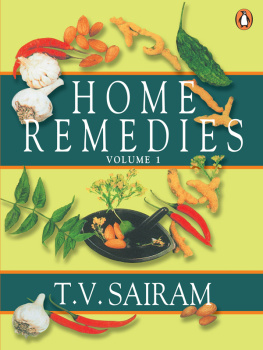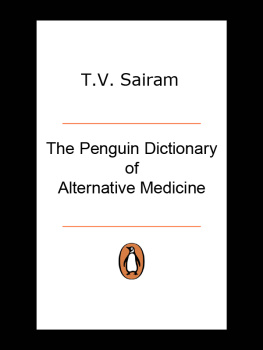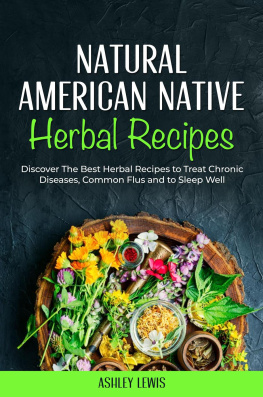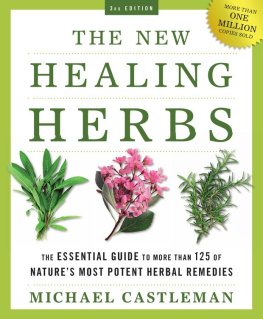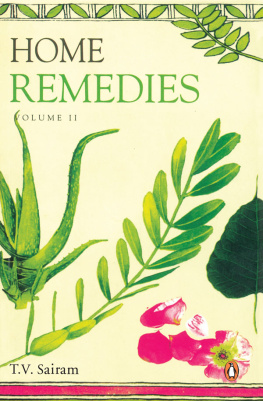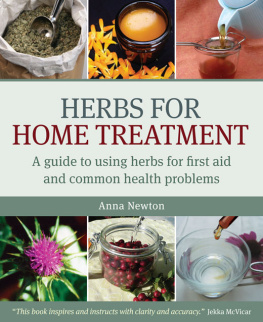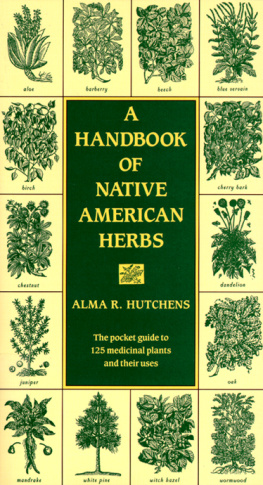T. V. Sairam
T. V. Sairam, a senior member of the civil services, holds a Masters degree in botany and a doctorate in alternative medicine. For the past three decades he has been gathering and documenting data relating to the household use of medicinal plants.
Introduction
For cutting off the tender sprouts, a fine of six panas will be imposed; for cutting off the minor branches, twelve panas and for cutting off the big branches, twenty-four panas. Cutting off the trunk will be punished with the first amercement; and felling will be punished with the middlemost amercement.
Arthashastra, III 19:197
The writing of this book was undertaken to fill what I perceive to be a serious void between the ethnic discovery of herbs and their scientific rediscovery.
It was felt that collecting and categorizing available data from folklore as well as the Western scientific literature on medicinal herbs would facilitate an informed understanding that could better evaluate the premises and methodology of the complicated and often misunderstood role of herbalism and alternative medicine. Herbs are often seen as the last resort once all other avenues of treatment have been exhausted. Being approached as last-minute miracle workers serves to reinforce the mystic aura associated with such systems of medicine, thus discounting the sophisticated and ancient herb lore that its practitioners draw on. The hereditary household remedial system handed down by often unlettered women, the village vaids, hakims and ojhas and their travelling counterparts represent the fragmentary remnants of systems evolved to perfection to meet the needs of localized communities, drawing on familiar plants and locally available materials to treat ailments. Such practices are however fast becoming extinct, and I have often noted on my travels that even in a far-flung village, it has become the fashion to go for a tablet of aspirin rather than a piece of ginger, unmindful of the feeble voice of a family elder or the village physician.
Systematic documentation of this knowledge becomes an urgent necessity in the face of such onslaughts, as has been made clear to me time and again on my frequent trips to remote areas. The Kotas, among one of the ancient inhabitants of the Nilgiris, have all but lost their familiarity with their native medicines. Their villages which till recently boasted of a village physician, now totally depend on the nearby hospitals for treating even the simplest of ailments.
An identical situation prevails in a village near Hyderabad. Almost the entire village was suffering from malnutrition due to vitamin deficiency. The villagers squarely blamed the government for their plight and pointed out that the local dispensaries never maintained adequate stocks of vitamins. All this was in spite of the surprisingly large number of drumstick trees which were growing almost everywhere in the village! All the vitamin-loaded leaves of the trees were ironically ending up as manure or cattle feed.
The ancient methods designed for optimum beneficial use of local resources are in danger in ways that classical systems such as Ayurveda, Unani and Siddha have overcome. These classical systems have been elaborately documented in the form of verses, which survive as manuscripts in the written form, or are passed on from generation to generation orally. Herbal folklore however continues to be unrecorded and as a consequence, endangered.
India has always been a treasure trove of herbs. Historically in traditional Indian cuisine, there was hardly any distinction between food and medicine. Herbs were seen as agents or satisfaction and well being. Centuries before the birth of the Greek and Roman empires, Indian ships carried herbs and their derivatives like perfumes and textiles to far-off destinations like Arabia, Mesopotamia and Egypt. The subcontinents wealth of flora derives from the wide variations in geo-climactic and ecological endowmentstropical, temperate, alpine and arid zones, fluctuating factors such as relative humidity, temperature, monsoon, etc. The sheer variety of herbs and spices available to early shamans and physicians and their rich herb mythology and herb lore lured human migration not only from her neighbourhood but also from distant lands.
Later, it was Indian spices that wrote a fascinating history of adventure, exploration, conquest and colonialism. Bitter sea battles were fought over the spice growing colonies. The treasures of herbs and spices have always been indicators of wealth and status and have dictated the policies of nations. Indian herbalism was developed by the ancient seers, sages, wanderers and tribals who through intuition and observation discovered the many properties of plants and their products. The wisdom and experience of generations was consolidated in its growth. Over the millenia, other herbal systems and herbs brought into the subcontinent grew and added to indigenous lore.
Today it is easy to forget that the original sources of modern medicine were unsung folk prescriptions: morphine from poppy, quinine from cinchona, ephedrine from ma-huang, digitalin from foxglove. Today too, there are people who still treat minor ailments inexpensively with remedies taught to them by their forebears. This is especially true of folk medicine and simple home remedies and beauty aids taught to young girls by their grandmothers in many parts of the country. The body of information accumulated in these and other systems of medicine, dealing with the specific medicinal applications of herbs for specific complaints, has been tested innumerable times over the millenia in actual practice.
Scientific Interest in Herbs
The term herb technically refers to a non-woody plant that dies down to the ground after flowering. In general use, it refers to any plant species, including trees. Plants are the chemical factories of nature. The spectacular progress in organic chemistry has rendered most of the natural products amenable to synthesis. In the late eighteenth century and the nineteenth century, organic chemists occupied centre-stage. Recognizing the importance of plant materials, they isolated the active ingredients of many plants and plant productsnimbidin from Azadirachta indica (Neem), hyosine from Datura metel (Green Thorn Apple), and reserpine from Rauwolfia serpentina (Sarpagandha). In the twentieth century, the sixties saw the phytochemists working with randomly chosen plants. In the seventies growing interest in folkloric drugs urged these qualified researchers to select and work on plants used in traditional medicine. In the eighties and nineties these studies, aimed at the isolation and structure elucidation of the chemical constituents of the chosen plants, were pursued further. Despite such investigation, it is estimated that ninety per cent of recorded flora remains unstudied. However, the ultimate aim of scientific interest in traditional drugs is neither to ascribe them formal recognition or to explore their use as just alternatives or supplements to modern medicine.

